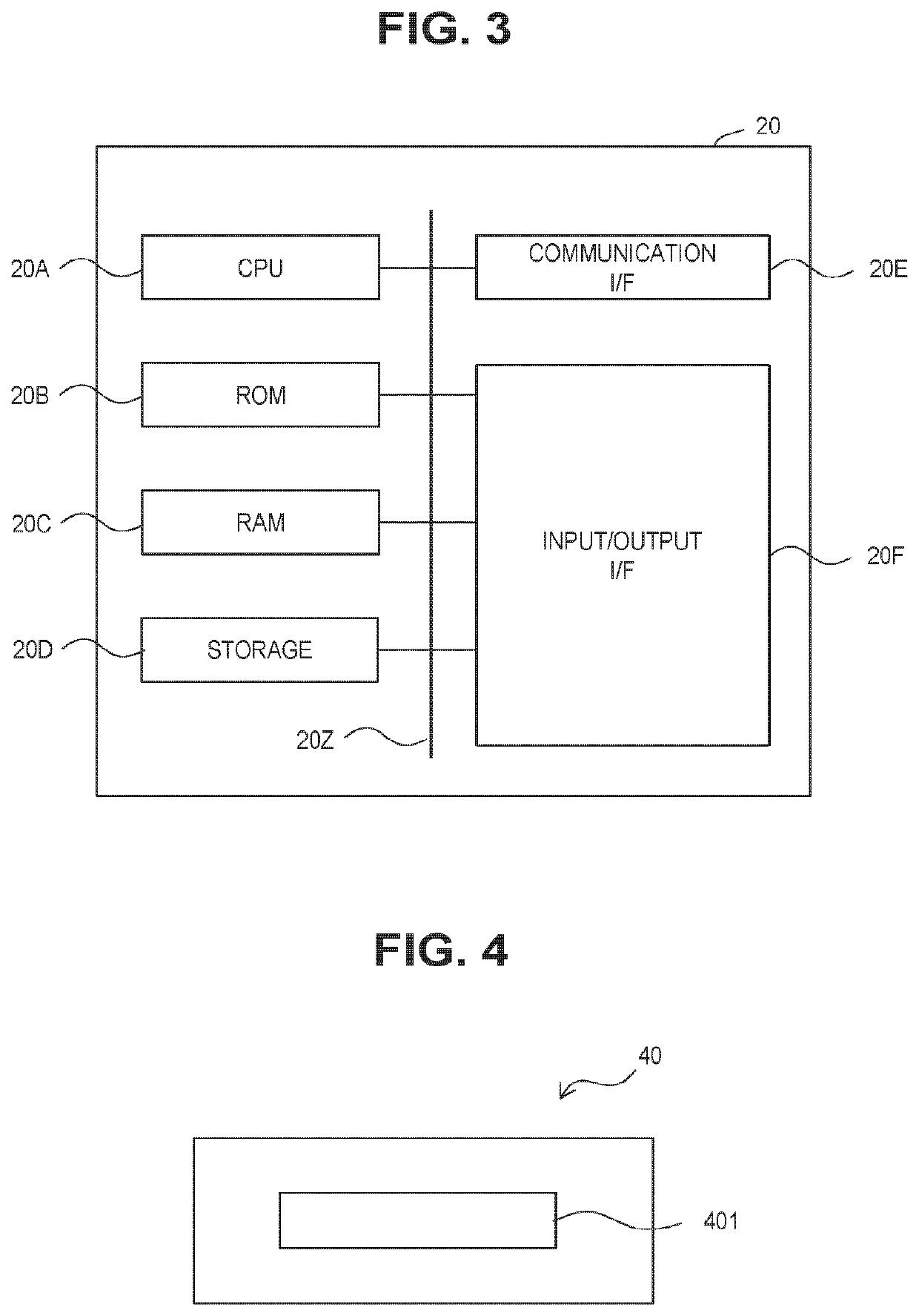In-vehicle solar charge control system, in-vehicle solar charge control method, and program
a technology of solar energy and control system, which is applied in the direction of battery/fuel cell control arrangement, light to electrical conversion, transportation and packaging, etc., can solve the problems of in-vehicle solar energy control system, large loss of power, and large power consumption of auxiliary machines supplied with the power from the first battery
- Summary
- Abstract
- Description
- Claims
- Application Information
AI Technical Summary
Benefits of technology
Problems solved by technology
Method used
Image
Examples
Embodiment Construction
[0027]Hereinafter, embodiments of an in-vehicle solar charge control system 10 (hereinafter simply referred to a system 10), an in-vehicle solar charge control method, and a program, according to the present disclosure, will be described referring to the drawings.
[0028]As shown in FIGS. 1 and 2, the system 10 is mounted on a vehicle 12. The system 10 includes a solar panel 14, an auxiliary battery (first battery) 16, an auxiliary machine 17, a high-voltage battery (second battery) 18, driving devices, a solar electronic control unit (ECU) 20, and a battery ECU 40.
[0029]The solar panel 14 mounted on a roof of the vehicle 12 is a power generation device that generates power by receiving sunlight. The solar panel 14 is a solar cell module which is an assembly of lots of solar cells. A power generation amount (kWh), an amount of power generated by the solar panel 14, and an output voltage have at least a correlation with an amount of solar radiation. The power generated by the solar pan...
PUM
 Login to View More
Login to View More Abstract
Description
Claims
Application Information
 Login to View More
Login to View More - R&D
- Intellectual Property
- Life Sciences
- Materials
- Tech Scout
- Unparalleled Data Quality
- Higher Quality Content
- 60% Fewer Hallucinations
Browse by: Latest US Patents, China's latest patents, Technical Efficacy Thesaurus, Application Domain, Technology Topic, Popular Technical Reports.
© 2025 PatSnap. All rights reserved.Legal|Privacy policy|Modern Slavery Act Transparency Statement|Sitemap|About US| Contact US: help@patsnap.com



